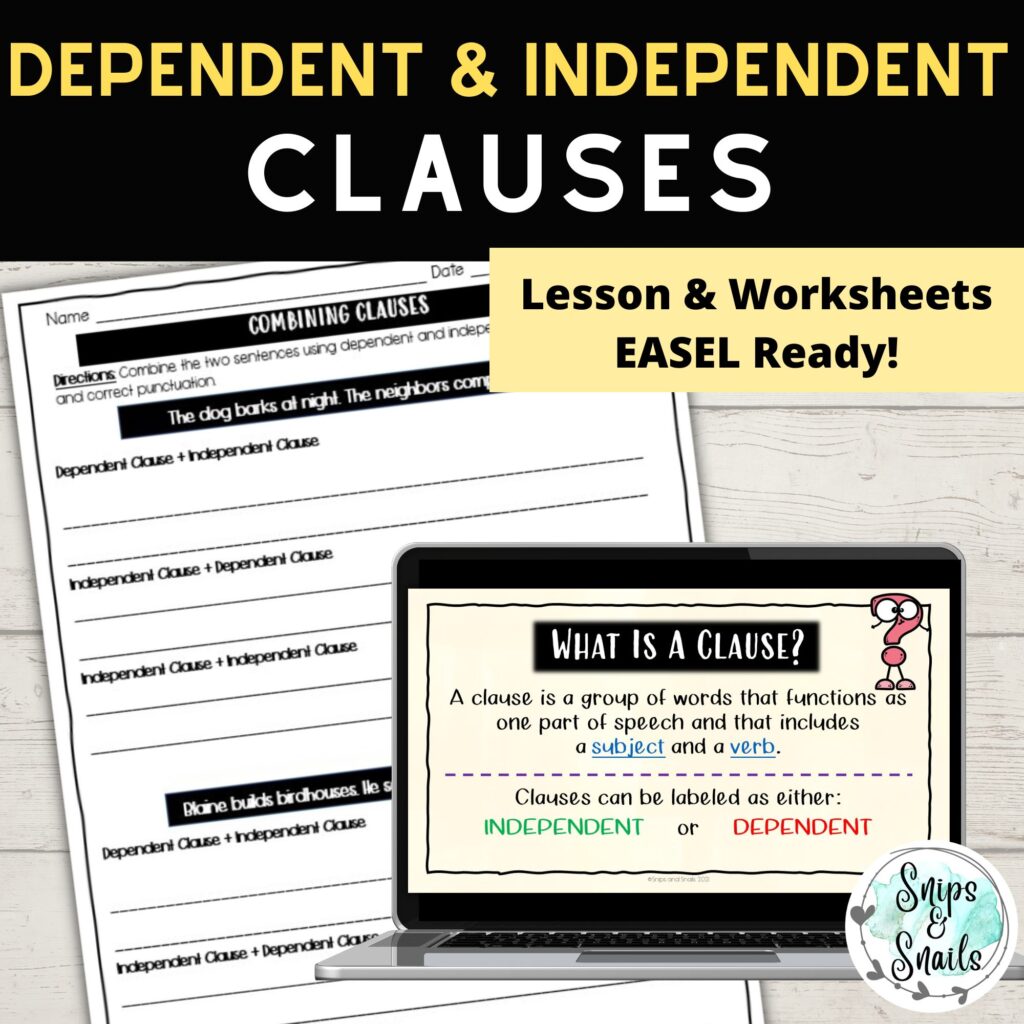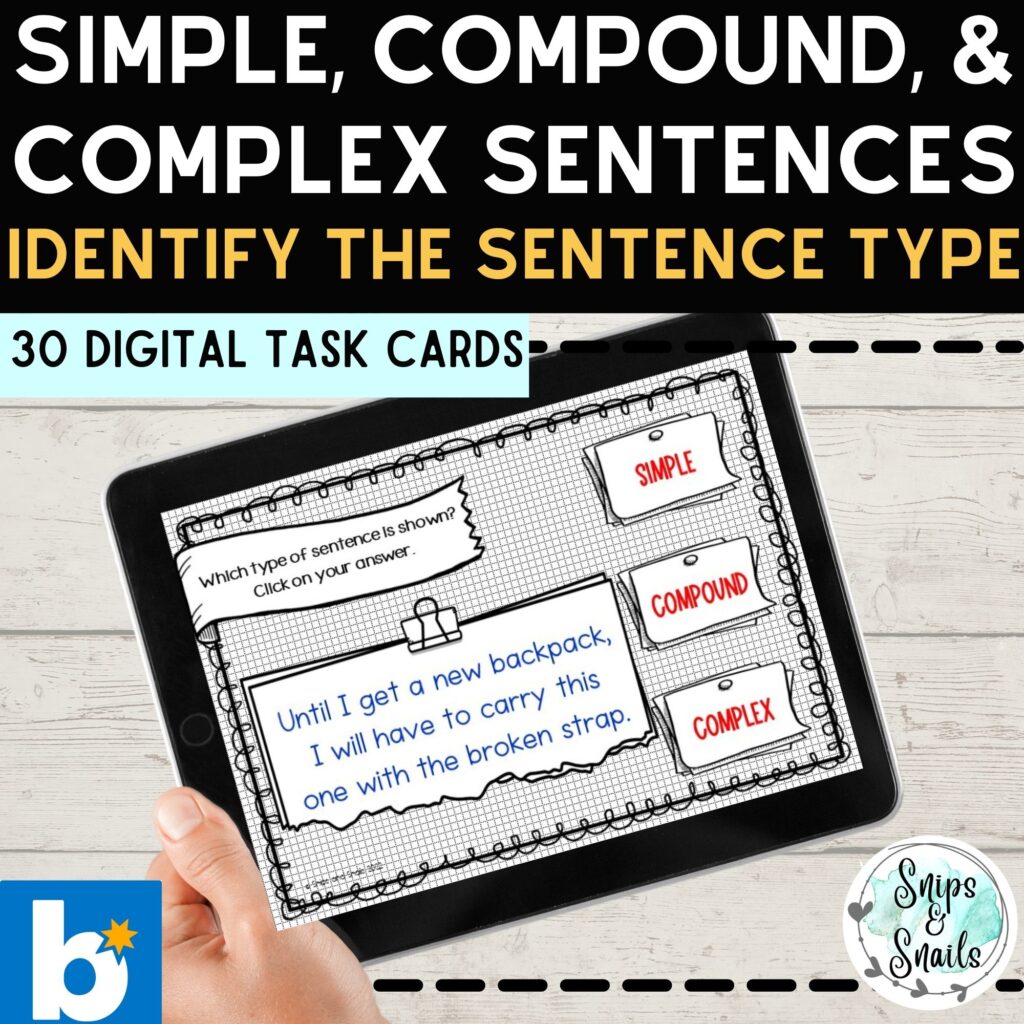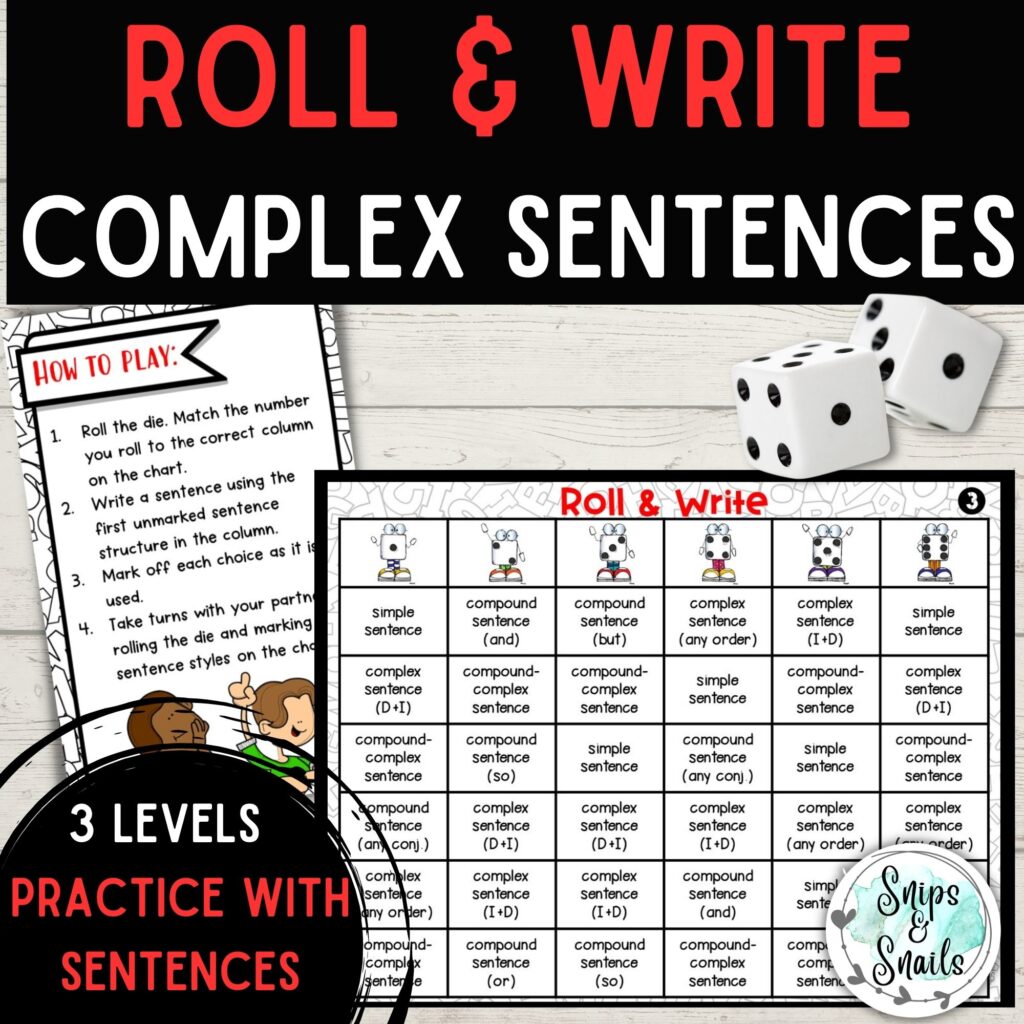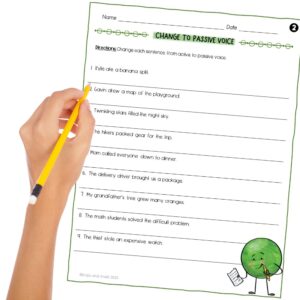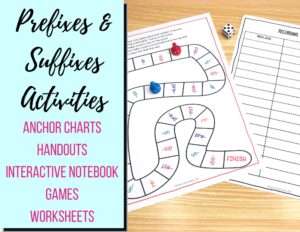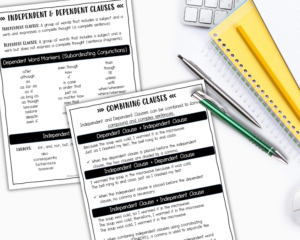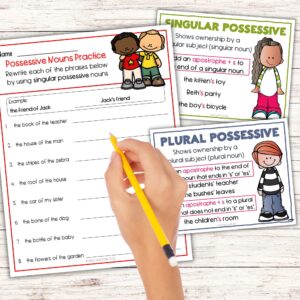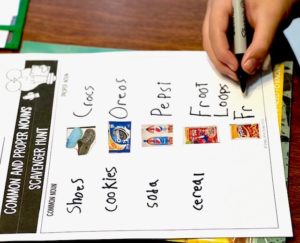Active and Passive Voice - Why It's Important
Understanding active and passive voice can help students write clearer and more effective sentences. It can also help them better comprehend the meaning of what they are reading.
By analyzing the differences between active and passive voice, students can develop critical thinking skills and learn to think more deeply about the language they use.
Admittedly, it’s a skill that requires a great deal of practice, though.
Read on to find out ways to scaffold your students’ learning to help them reach mastery quicker.
Activities for Active and Passive Voice Practice
Define Active and Passive Voice and Provide Examples
Active and passive voice are two sentence structures used to convey the action of a sentence.
Before students can practice identifying and using these two sentence structures, you need to ensure they understand the definitions.
In active voice, the subject performs the action. Example: Joey asked the teacher a question.
In passive voice, the subject receives the action. Example: The teacher was asked a question.
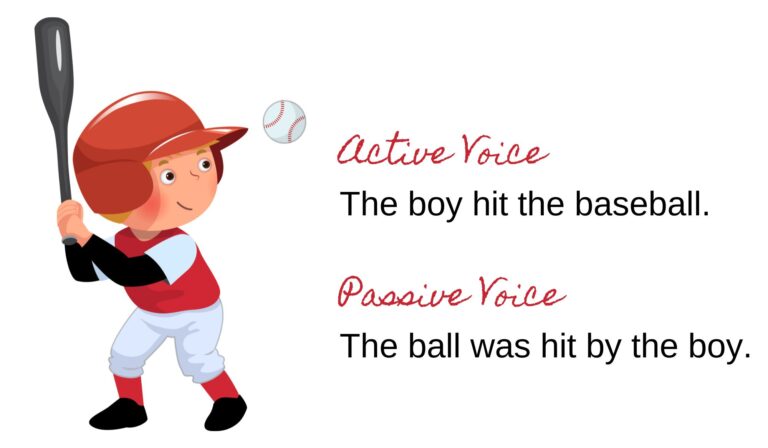
Practice Identifying Active and Passive Voice
Next, have students practice with differentiating between sentences that use the two structures.
This is the first step in the learning progression, so don’t skip it! Identifying misunderstandings early can prevent problems later!
Whole Class Response Activities
When you begin practicing with your students, you can present examples to the whole class and incorporate an active response system (thumbs up/thumbs down; stand up/sit down; A/P hand paddles).
This allows you to take a quick survey of the class’s progress as a whole and allows you to pinpoint students who may still be struggling.
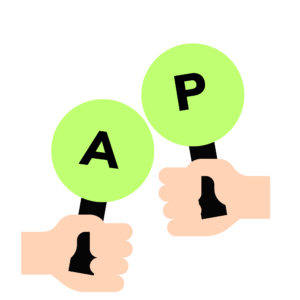
Worksheets for Practice and Formative Assessment
Worksheets can be the perfect tool for gathering data on individual students’ progress.
When used as entrance or exit tickets, incorporated into centers or even used as homework, traditional worksheets provide a great opportunity for students to practice.
As a formative assessment, you can to catch misconceptions early on in the learning.
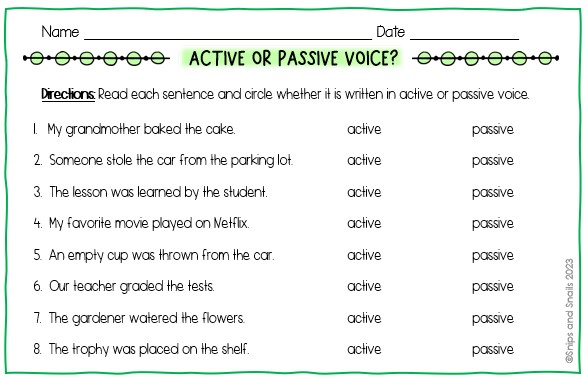
Practice Changing Active and Passive Voice Sentences
Once students can identify active and passive voice sentences, they need to practice changing voice.
I scaffold this practice so I can intervene with students quickly.
Change Passive Voice to Active Voice
Since active voice sentences are the most common sentence structure, students are most familiar with these. They simply make more sense to the students as they begin this level of practice, so they are the easiest for them to write.
This could be a great place to start with your students, too.
Model how this works for the students on the board and let them help you change a few before they begin to work with partners or independently.
You can gather passive sentences from any text you are reading in class or write your own sentences as examples.
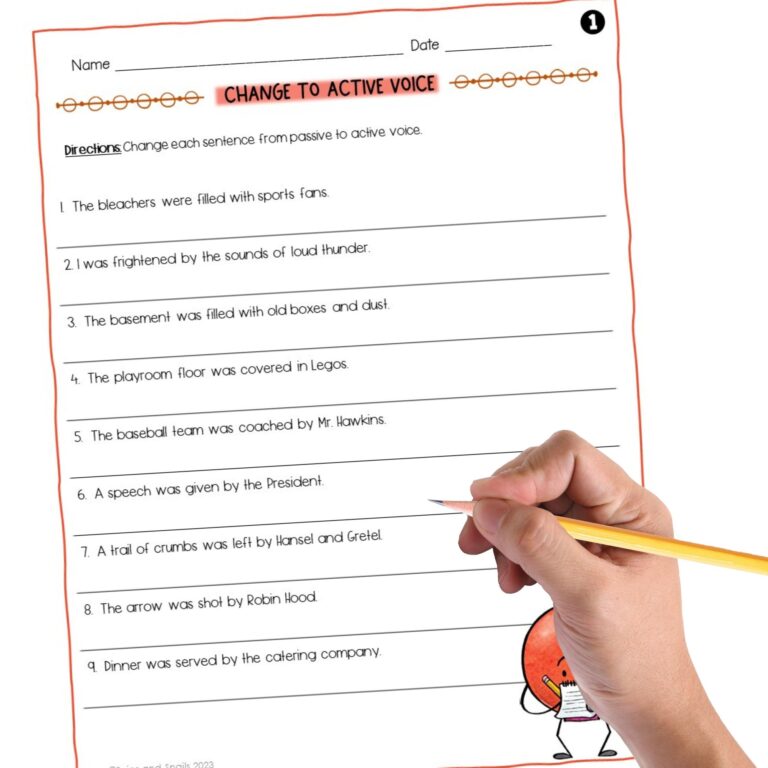
Change Active Voice to Passive Voice
These sentences can present a little more of a challenge for students since the verb form changes and they need to be careful to make the object of the original sentence the subject.
Again, begin with a strong model and practice with the whole class.
Finding active voice sentences to use as practice won’t present a problem (which is good) since some students may require more practice than others.
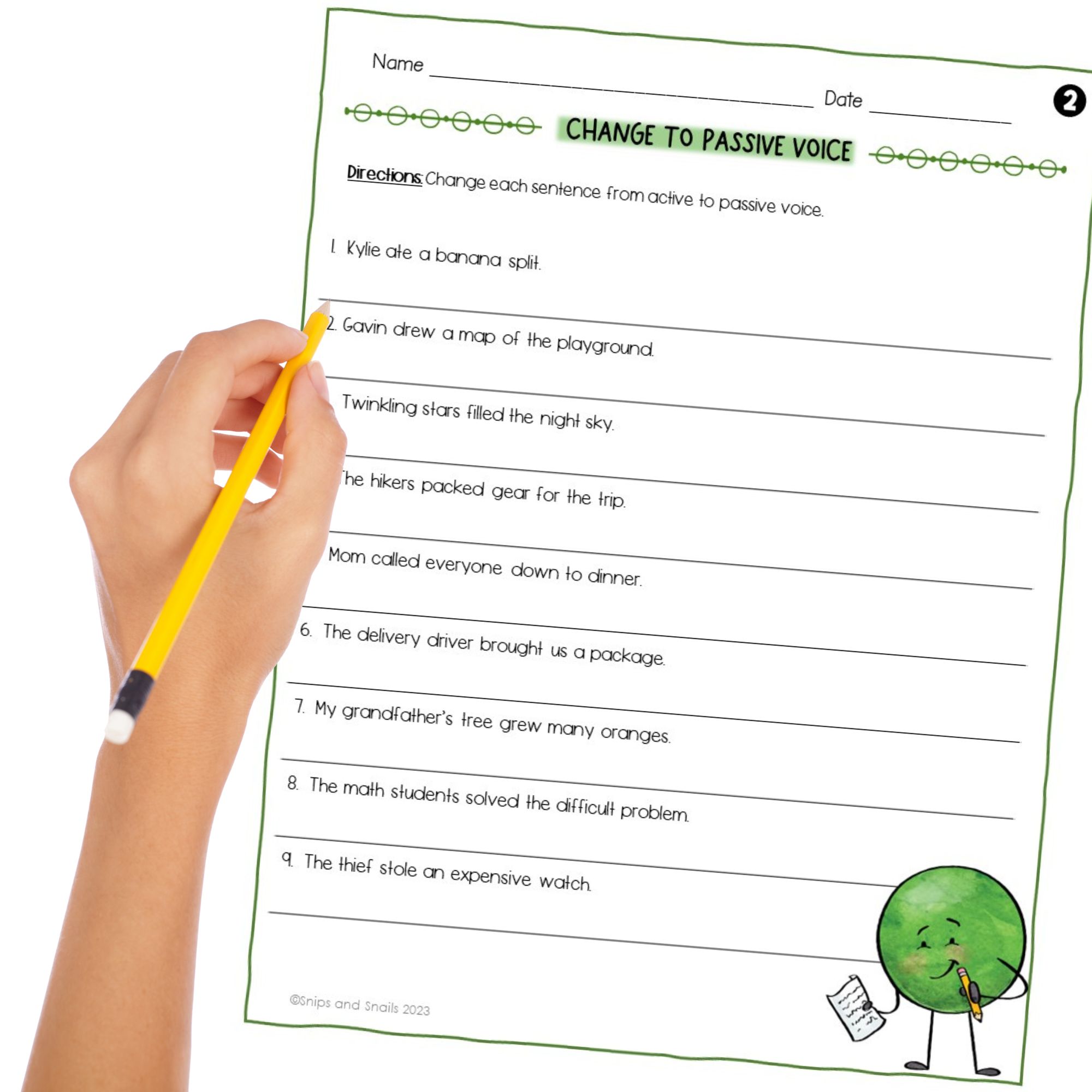
Change Voice - Mixed Sentence Practice
I also give students practice pages with active and passive voice sentences mixed together.
This tests their ability to recognize the voice of the given sentence AND change the voice appropriately.
It’s provides an increase in rigor and allows me to identify problem areas quickly and easily.
I’m including one of these pages in the freebie. Check it out below!
Find Passive Voice in Writing
Send students on a hunt for passive sentences in stories!
Since they are not as common as active voice sentences, this is a fantastic way to challenge students to look closely at the structure of the sentences in what they are reading.
When they find a sentence, discuss with them why the author may have chosen to use this voice instead of active.
Close reading for grammar is a win!
You can begin by providing some practice activities with pre-printed stories in class. This allows you to screen the text first and identify the sentences you expect the students to find. In essence, you can make an answer key.
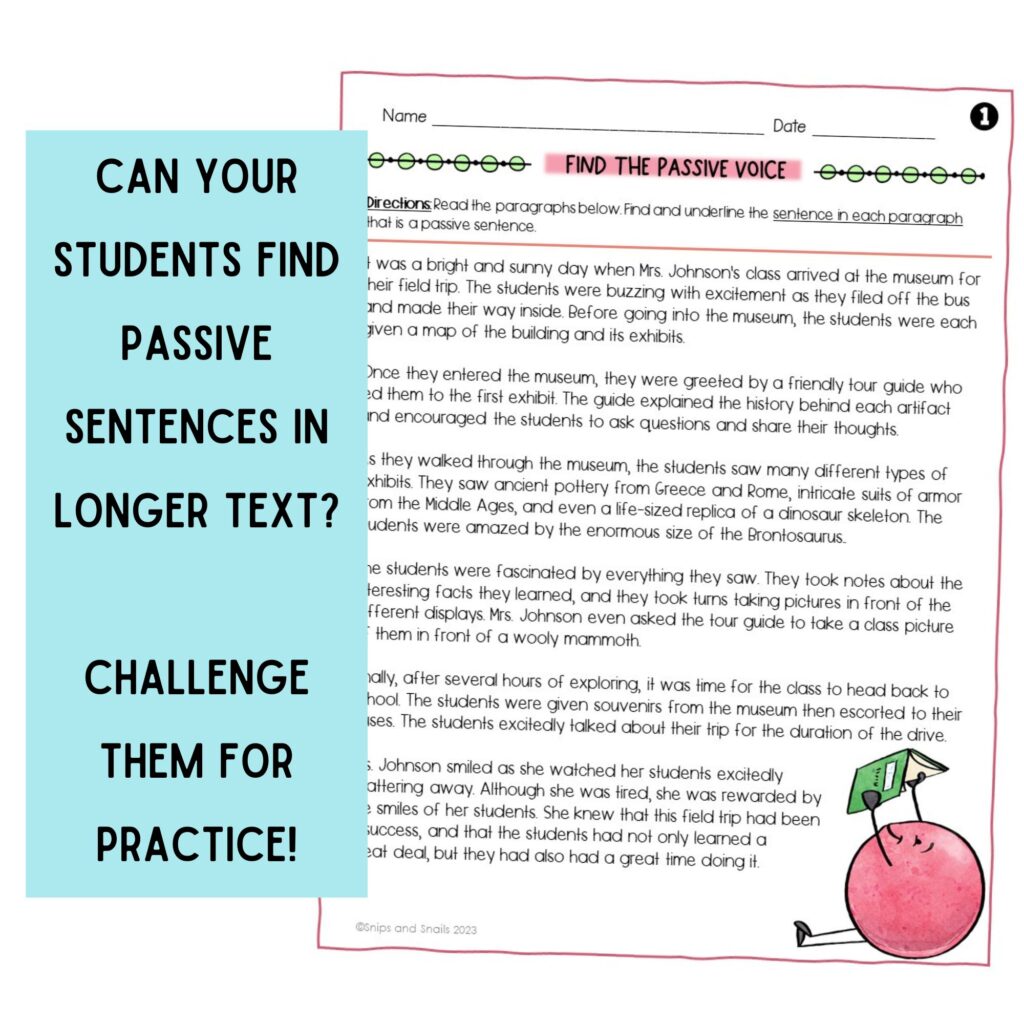
A Scavenger Hunt Activity for Passive Voice
The scavenger hunt is fun way to provide some student choice into your practice.
Student use a book or text of their choice then go on the hunt for passive sentences in the writing.
The scavenger hunt is easily incorporated into centers and can be used as partner work.
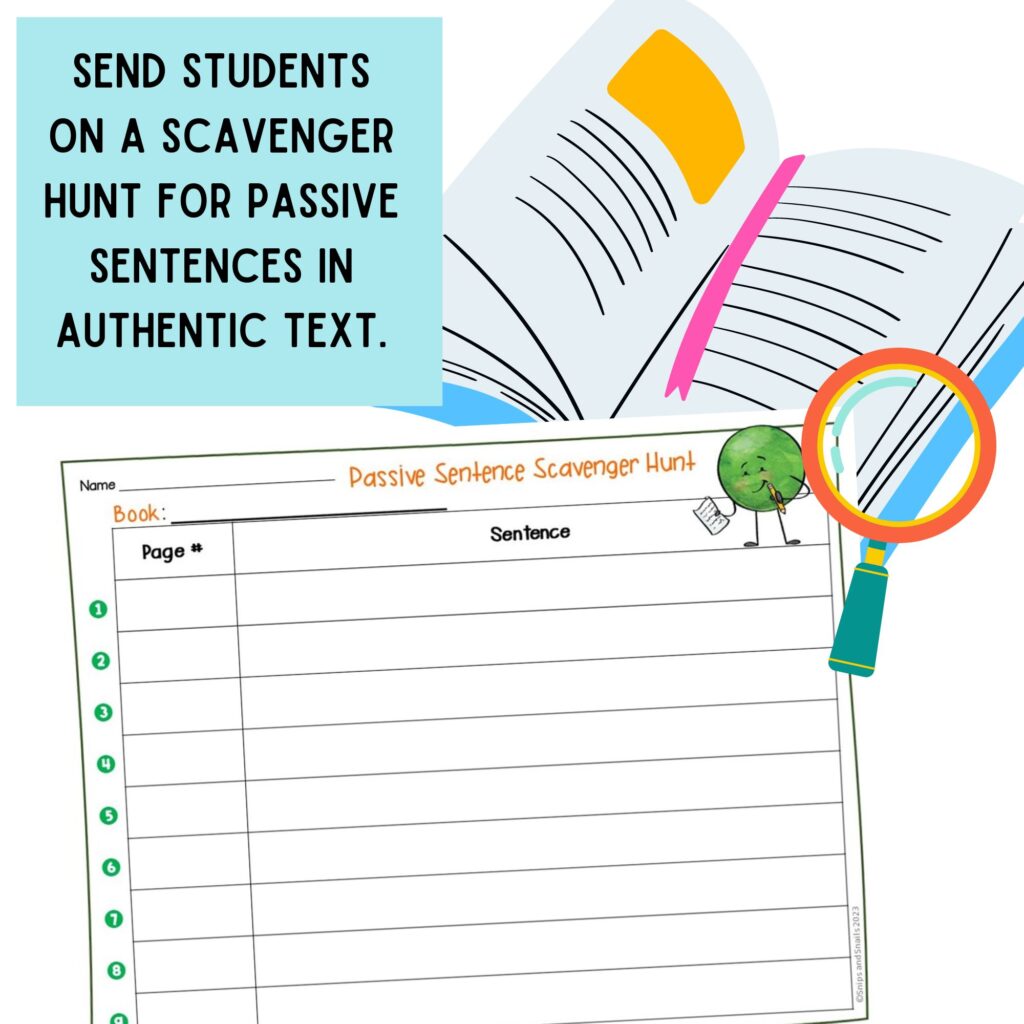
Incorporate Games to Practice Writing Active and Passive Voice
Students love to play games when learning, so try incorporating play into your active and passive voice practice.
A fun and effective game to include is a version of charades.
To play, give a student an action to do. The rest of the students must guess the action then provide an active voice sentence and a passive voice sentence to match the action.
For example, if the student (let’s call him Marcus) moves a chair under a table, the class might say:
Active Voice Sentence: “Marcus pushed the chair under the table.”
Passive Voice Sentence: “The chair was placed under the table by Marcus.”
Since alternative sentences are a possibility, you could even play to see how many different sentences the students can develop.

With the proper practice, your student can master active and passive voice in writing, and will be writing better sentences soon!
Drop a comment below to let me know what you think and what worked in your classroom.
Grab Your Freebie Here:
Download these freebies to help get your started with practice active and passive voice with your students.
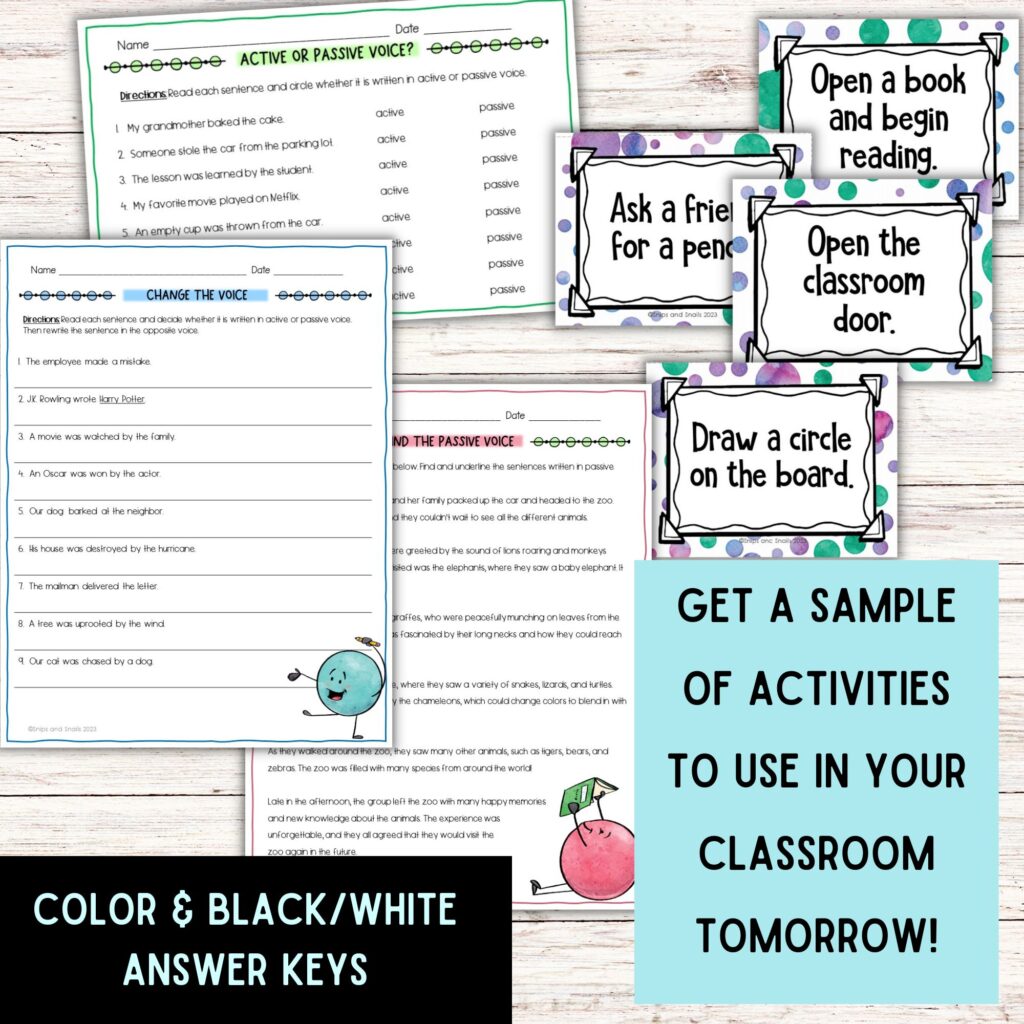
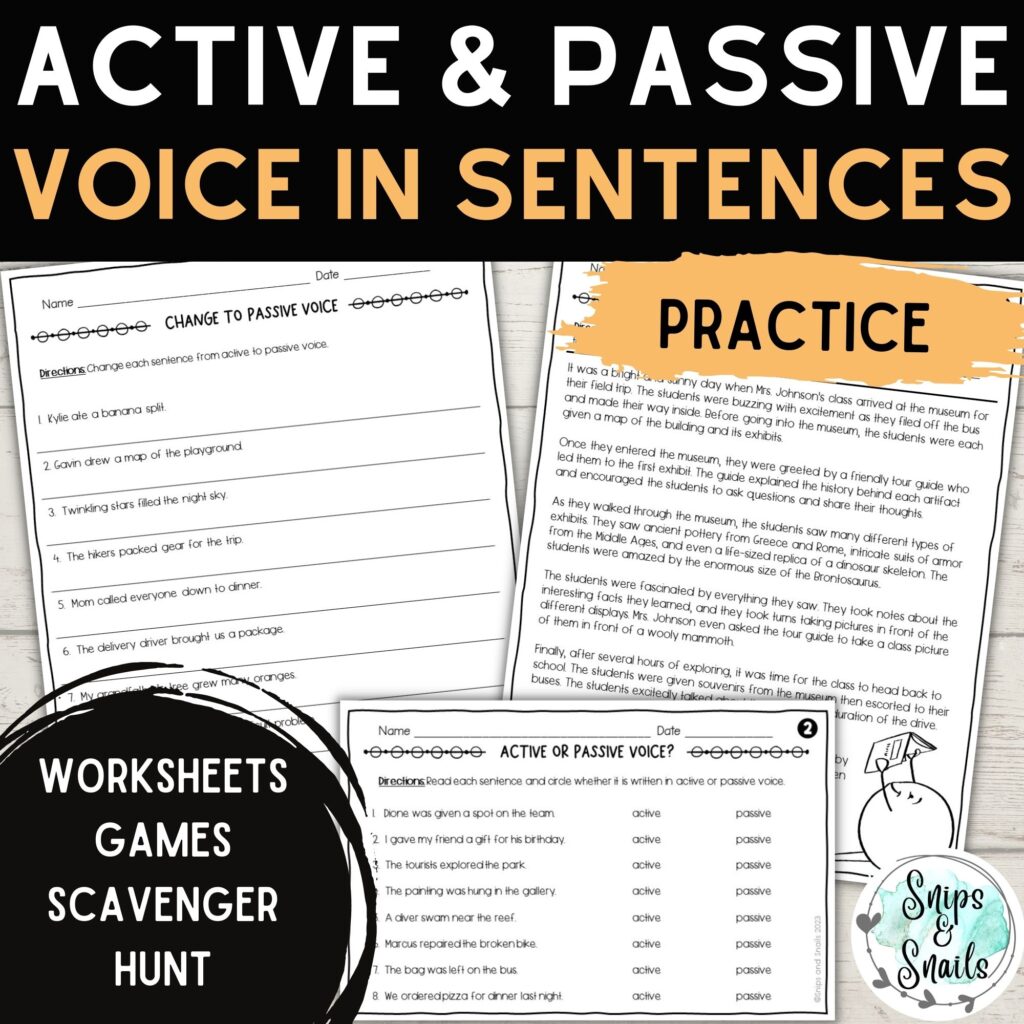
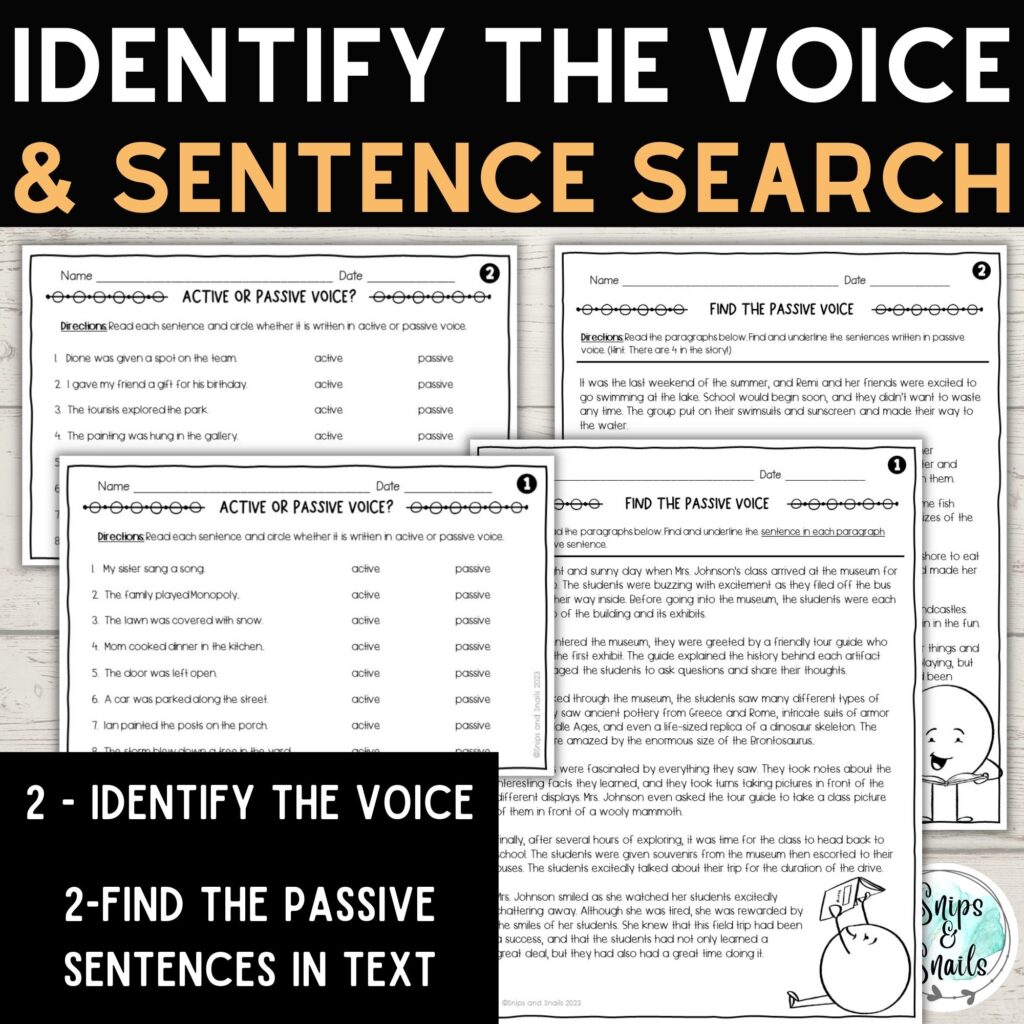
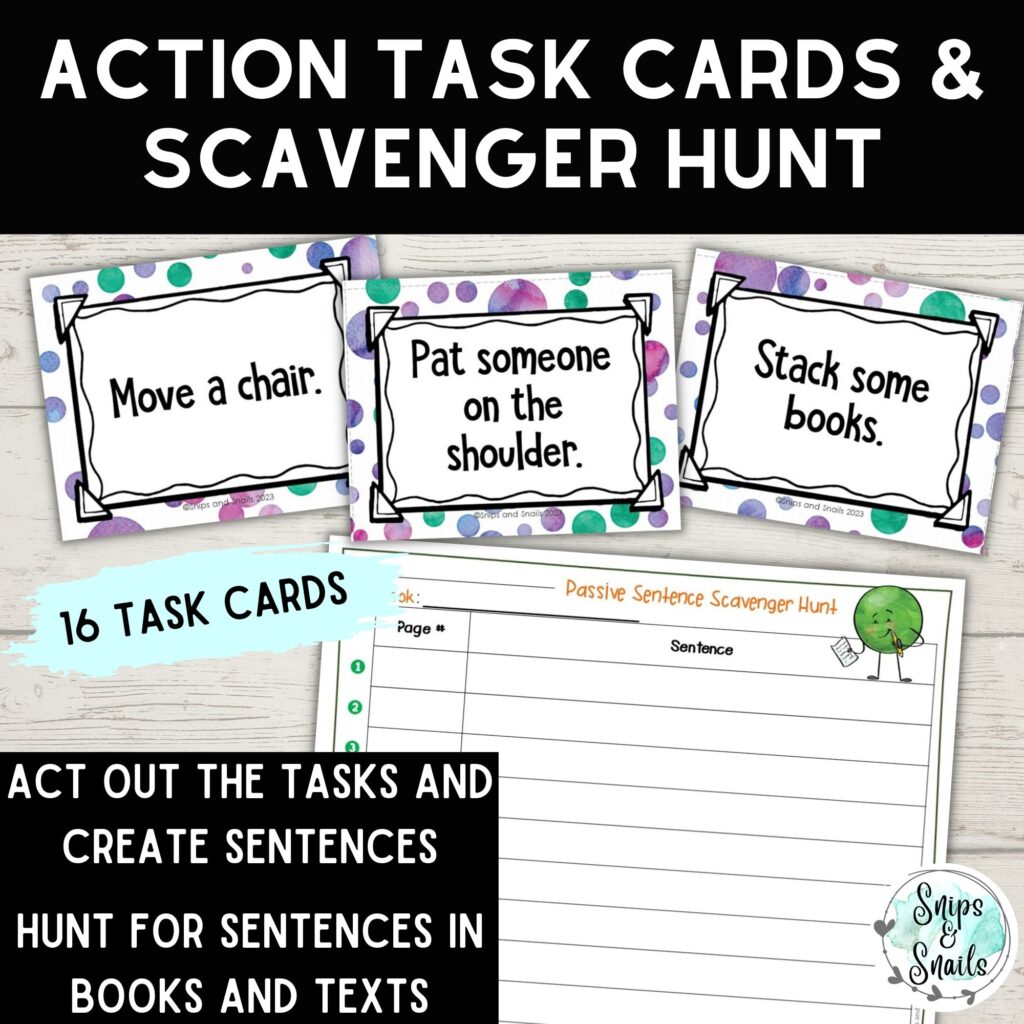
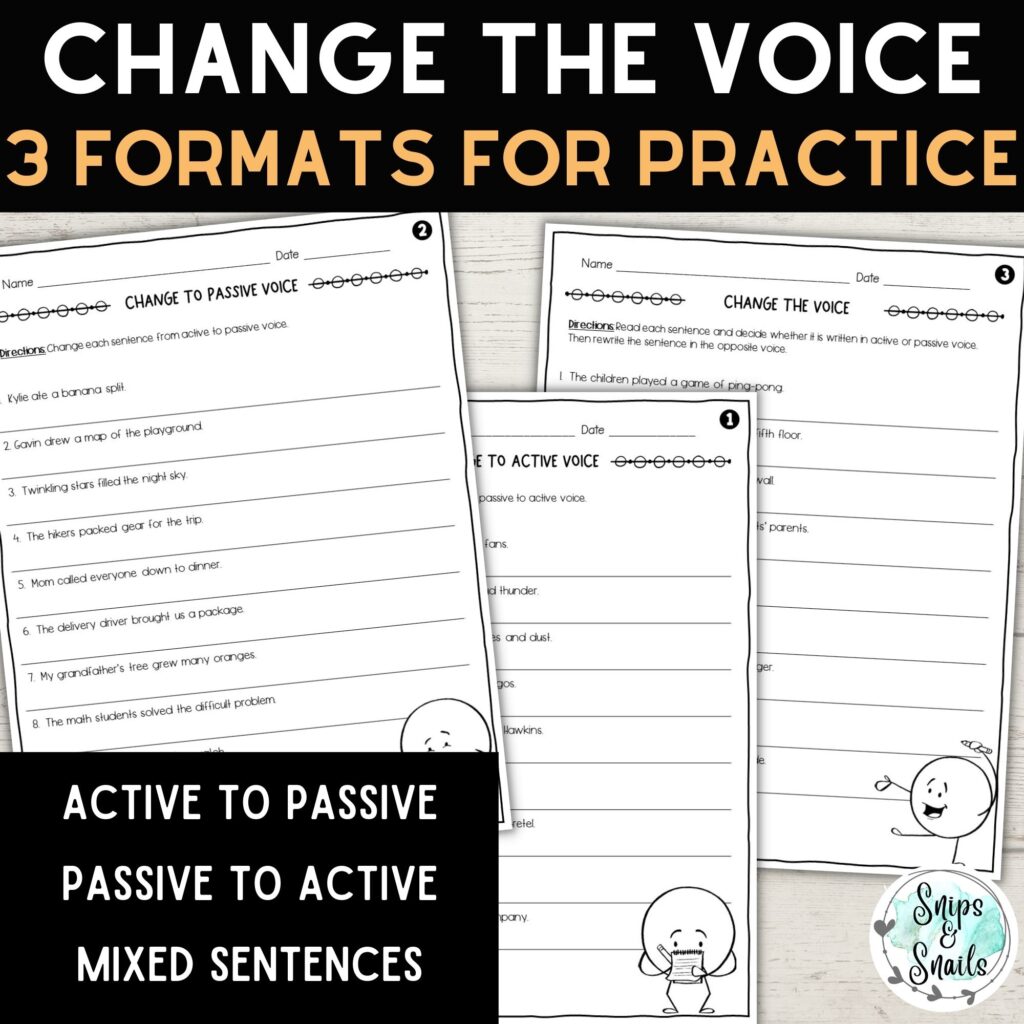
What’s included:
- 2 worksheets for identifying the voice as active or passive
- 3 worksheets for changing voice (active to passive, passive to active, and one with mixed sentences
- 2 worksheets challenge the students to find passive sentences in stories (one easier, one harder)
- 1 Scavenger Hunt worksheet gives students a chance to hunt for passive sentences in books and authentic text
- 16 action task cards can be used for a game of charades; one students acts out the card while the others develop active and passive voice sentences for the action
- Color and Black/White versions
- Answer Keys

